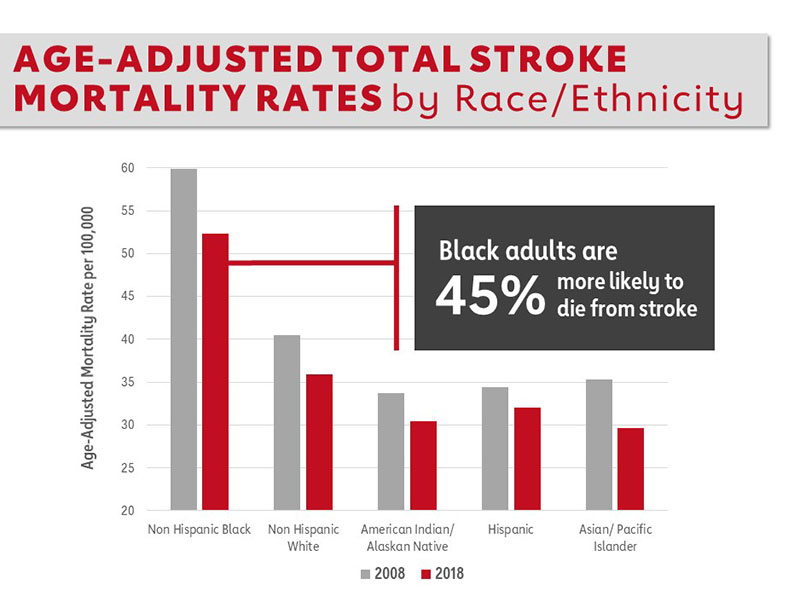A Sign of Hope: Black Americans’ Stroke Rates Are Falling
Black Americans have been disproportionately affected by stroke for decades, which has had a lasting impact on families and communities. Nevertheless, a glimmer of optimism has shown in the middle of the difficulties: a steady drop in stroke rates within this demographic. This pattern provides evidence of adaptability, focused interventions, and an increasing awareness of the particular risk factors that Black communities face.
Fundamental Difficulties: A Heritage of Inequalities
Black Americans have historically had stroke rates that are almost twice as high as those of White Americans. Numerous intricate reasons, such as the following, can be blamed for this discrepancy:

Socioeconomic disparities: Poorer incomes, unstable housing, and restricted access to high-quality healthcare all lead to chronic illnesses like diabetes and hypertension, which are significant risk factors for stroke.
Environmental factors: Lead exposure, food desert exposure, and air pollution all increase the hazards to one’s health.
Racial bias: Both explicit and implicit racism in healthcare settings can result in poorer care, insufficient treatment, and delayed diagnoses.
Shifting the Stream: An Integrated Method
A multimodal strategy to address these issues has led to a decreased trend in Black Americans’ stroke rates. Important participants include:
Raised awareness: Public health initiatives have promoted prompt access to healthcare by increasing knowledge of stroke risk factors and symptoms.
Better access to healthcare: More African Americans are now able to obtain treatment for chronic illnesses and preventative care thanks to the increase of health insurance coverage made possible by programs like Medicaid.
Targeted interventions: Positive outcomes have been achieved by community-based programs that emphasize blood pressure control, diabetes management, and healthy lifestyle choices.
Taking socioeconomic determinants of health into account: For Black communities, initiatives addressing problems like food insecurity, unstable housing, and a lack of mobility are boosting overall health results.
Research and lobbying: The push for legislative changes and healthcare equity initiatives is coming from a combination of increased research on stroke inequalities and advocacy efforts aimed at reducing implicit prejudice.
A Bright Future: Maintaining the Flow
Although there is a strong ray of hope due to the declining stroke rates, significant discrepancies still exist. To consolidate gains and guarantee that everyone has fair access to high-quality healthcare, more work must be done. We have to:
Invest in long-term funding: Research on stroke inequalities and public health initiatives need long-term support to make significant change.
Increase access to healthcare: It’s still imperative to close the access and coverage gaps for experts.
Discuss the socioeconomic factors of health: It is essential to address food insecurity, housing instability, and poverty in order to make the environment healthy for everyone.
Encourage communities: Encouraging patient involvement and providing support to neighborhood-based organizations enables people to take charge of their health.
Continue your lobbying and research: Achieving long-lasting change requires lobbying campaigns to end racial bias in healthcare and ongoing study on stroke inequalities.
Black Americans’ stroke rates have been declining, which is evidence of the effectiveness of group efforts and persistent commitment. We can move toward a future in which stroke and all of its terrible ramifications do not determine a community’s level of health by building on this momentum, making investments in focused interventions, and tackling the underlying causes of health disparities. While achieving health equity will take time and effort, the payoff is immeasurable: a healthier future for everybody.